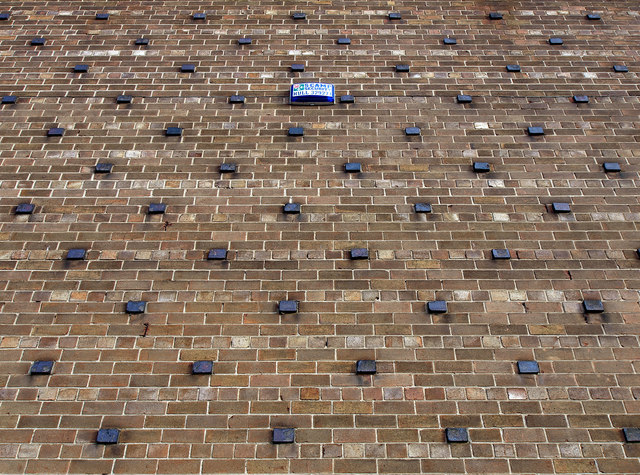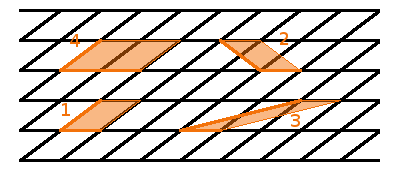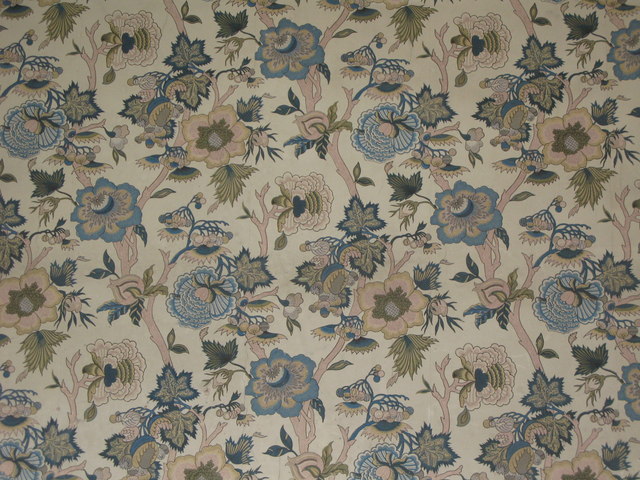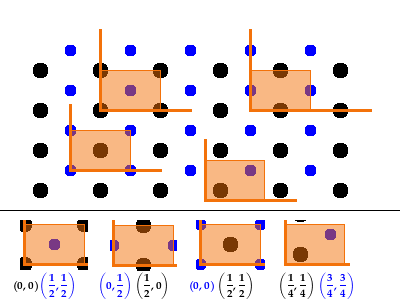


Any regular periodic pattern such as the bricks in a wall can be described by a repeating unit and a prescription about how to repeat it, i.e. a lattice. Any lattice point (e.g. the black head-on bricks in the picture) can be reached from any other lattice point by an integer number of translations along the lattice vectors: $$\vec{r}'=\vec{r}+u_a\vec{a}+u_b\vec{b}(+u_c\vec{c})$$ Click (or tap) the image to show the lattice vectors and coordinate axes.
In a crystal, there are usually atoms located at the lattice points, but this is just by convention. A lattice point is just a mathematical notion, which doesn't have to be linked to a physical object. There may also be atom positions elsewhere in the lattice which do not coincide with lattice points.

The choice of lattice vectors isn't unique. Any pair (in 2D) or triple (in 3D) of orthogonal lattice vectors (i.e. vectors that begin and end at a lattice point and together span the whole plane or space) can be used to describe the lattice. Four examples of lattice vector pairs in a planar network are shown here. Number 4 is different from the others in that the parallelogram made up by connecting the tips of both vectors is larger than necessary; it has twice the size of any of the other three. The reason is that examples 1-3 only have lattice points at their corners, while one of the lattice vectors in case 4 reaches across a lattice point, resulting in two additional lattice points on the edges of the parallelogram.
A primitive lattice is a lattice whose lattice vectors include the smallest possible area (2D) or volume (3D). In the 3D case, this is measured by the triple product $$V=|\vec{a}\vec{b}\times\vec{c}|\qquad.$$ This still isn't unique, though. A set of conventions is applied to determine which lattice is usually used when describing a particular type of crystal.

The lattice defines the location and repetitive arrangement of lattice points. The parallelogram (in 2D) or parallelepiped (in 3D) spanned by the lattice vectors is known as the unit cell. It is the unit that is being repeated. The position of any points (atoms in the case of a crystal) within the cell is the basis. If you click (or tap) the wallpaper image, the unit cell spanned by a particular set of lattice vectors is shown in orange, while the basis (the positions of the centres of the four distinct flowers) is shown as green dots. Note that the blue flower at the lattice point bottom left is repeated at the other four corners. Because all corners are equivalent, they count only as a single occurence (4/4) within the unit cell. Similarly, the flower on the left edge is repeated on the right edge - a single occurence (2/2) in the cell. The one near the top edge is within the cell, not on the edge, so counts as a whole (1/1) occurence. The basis contains four points (flowers, atoms, molecules) at the positions (0,0), (0,½), (½,½) and approximately (½,0.95).

The basis depends on the set of lattice vectors chosen because the coordinates of each point depend on where the origin of the unit cell is, as well as on the direction of the lattice vectors. The 2D lattice shown here has a primitive unit cell containing two points (a black one and a blue one). Four different choices of primitive lattice and their unit cells are indicated. Because the points are at different locations within the unit cell, the basis, i.e. the coordinates of the points expressed in terms of the lattice vectors, is different, too. Note that each point at a corner or edge of the unit cell is counted once only.
The next section looks at the surprisingly small number of distinct lattices in two and three dimensions, their symmetry properties, and at a way of identifying sets of lattice planes.